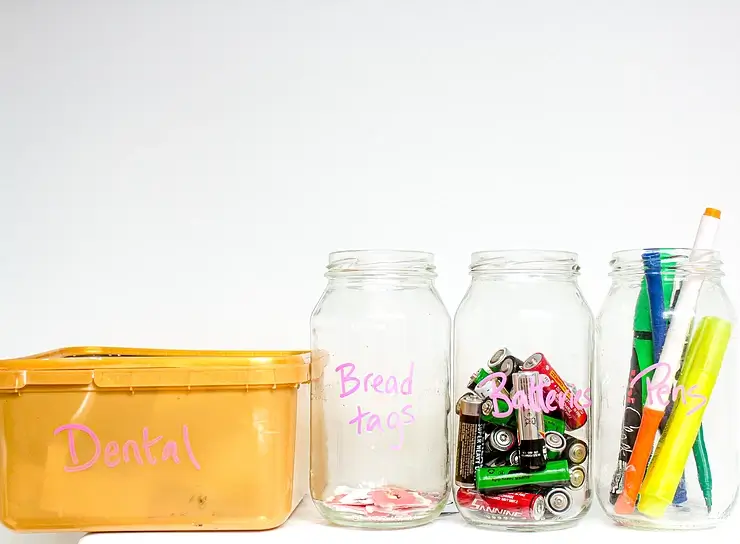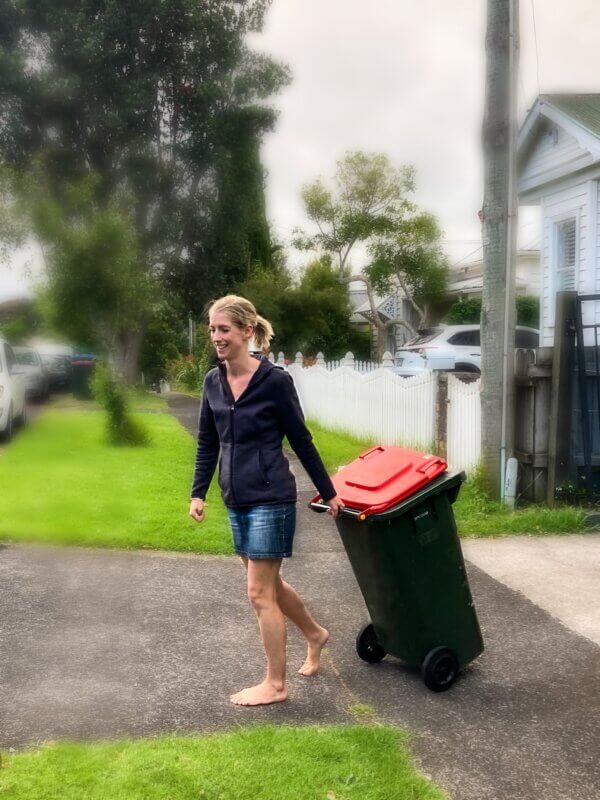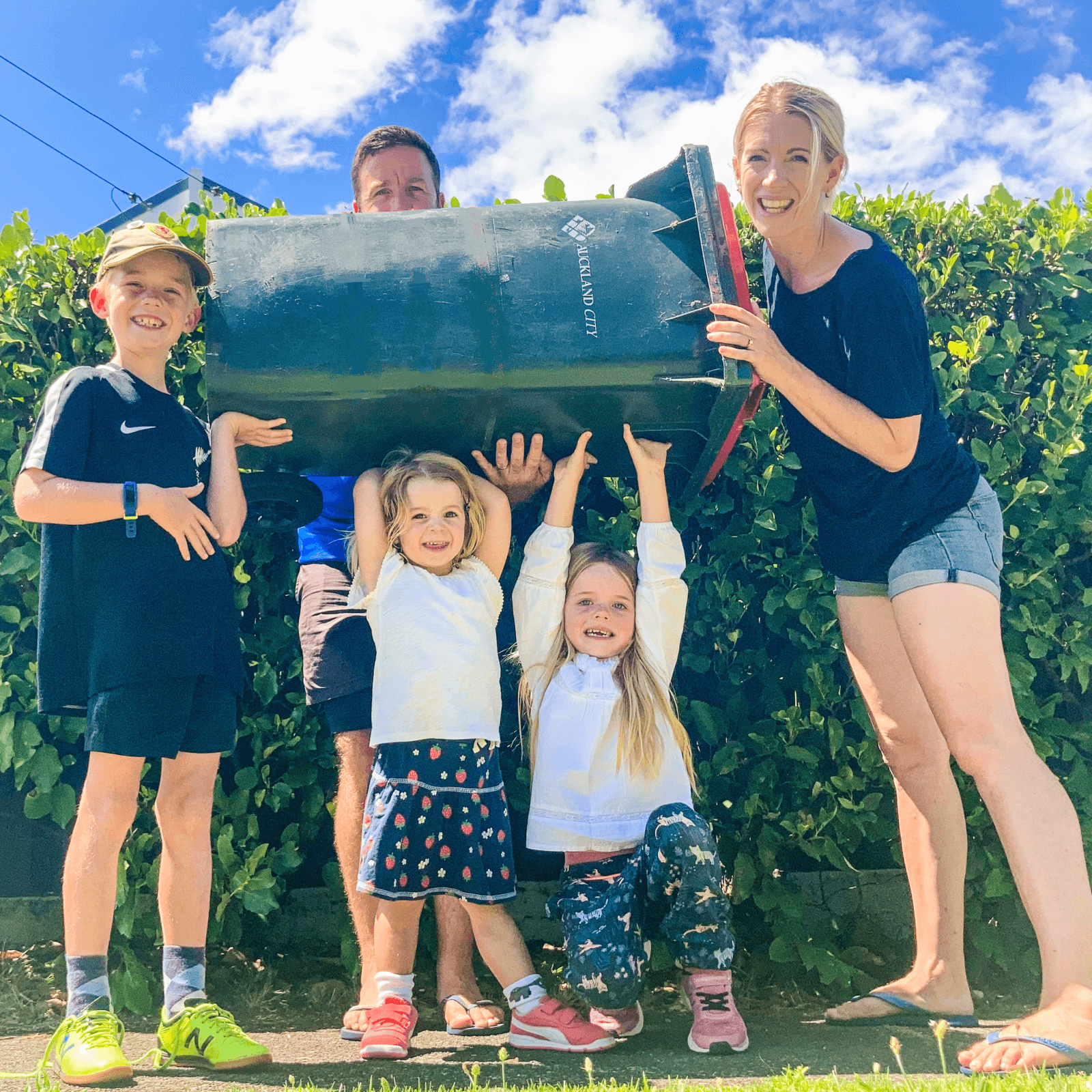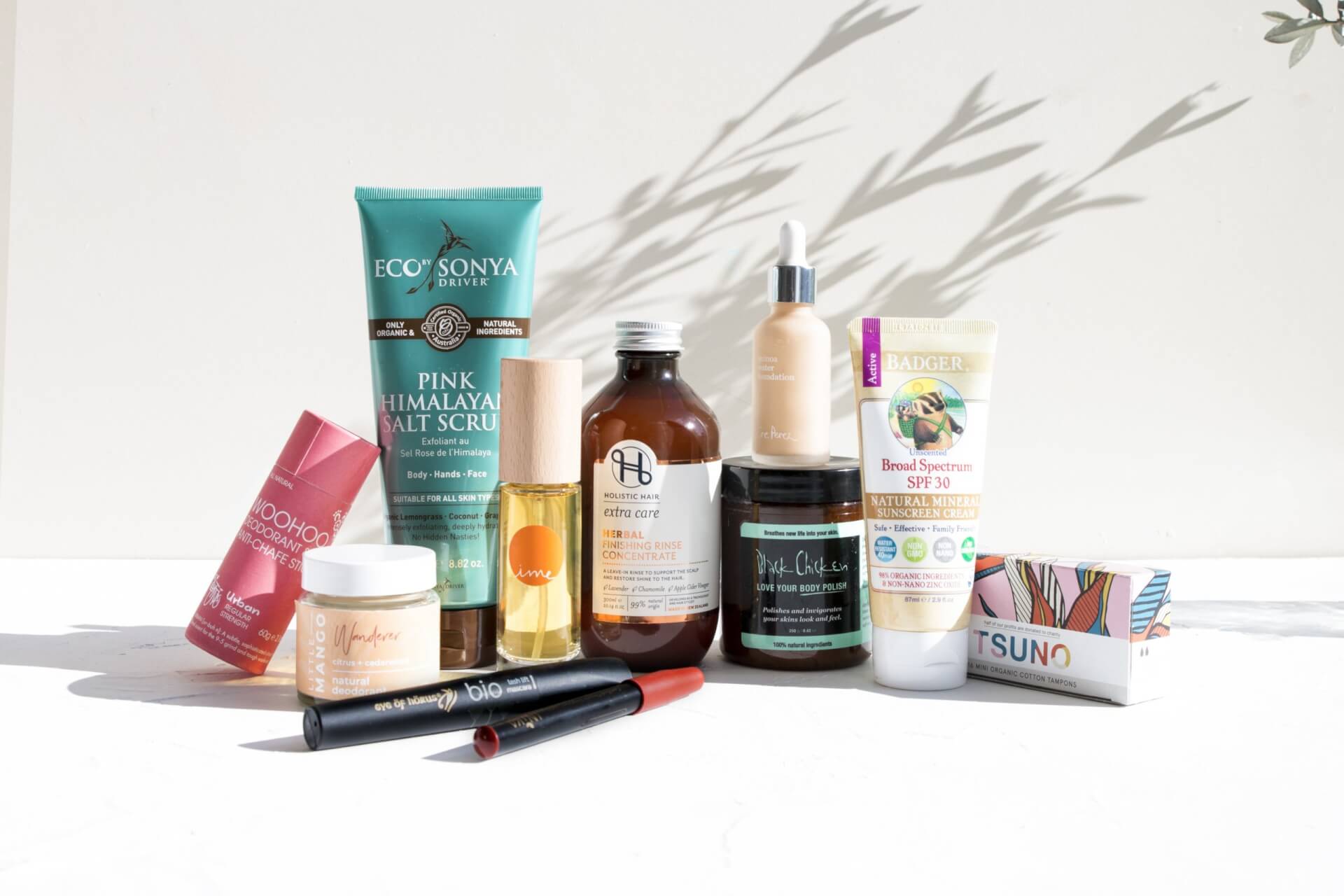Community, Home & Living, Lifestyle, Sustainability, Waste free, Words from Juliet Dale - The Great Eco Journey
The One Bin Challenge – From Juliet at The Great Eco Journey
How long do you think it would take you to fill a wheelie bin with rubbish? A week? Fortnight? Month?
At the beginning of this year, our family set ourselves a (somewhat crazy) challenge: to fill only one bin of rubbish for the entire year. Now three years ago, this would have seemed a completely impossible notion to us. We were putting out a ¾ full bin every week! However, over the last three years, we have been making small, gradual changes to reduce our waste, and consequently, something previously so-far-out-of-reach seemed… maybe… just maybe… doable. Plus, we are uber-competitive and always like a good challenge!
Now before I tell you how we got on, I want to ask you a question: could you do the one-bin challenge? I don’t necessarily mean one bin per year, but how about one bin per month? Or one bin per fortnight? What would be a suitable one-bin-challenge for your household? Don’t worry, there is no pact to sign, payment to take part, or punishment if you fail. I’m just asking you to think about pushing yourself, challenging yourself, to do a little bit more than what you are doing right now. I’m also going to give you some of our top tips to get you started.
Through our waste-reduction journey, there are three things that we have done that even if we had done absolutely nothing else, we estimate that we would still have reduced our waste by 60-80%. Sound too good to be true? It’s really not, and there’s a good chance you are already doing at least one of them.
The Three Biggies:
- Composting – Like the Joe-average Auckland household, organic waste (food and garden) used to make up nearly half of our curbside bin. That’s right, you could halve your household rubbish just by tackling your food waste! Composting, worm farming or bokashi are all great options. You’ll also create amazing nutritious food for your garden (or someone else’s), and reduce your climate footprint (landfill does not provide the conditions food needs to biodegrade and compost, instead it slowly rots, emitting methane, a powerful greenhouse gas).
- Soft Plastic Recycling – Recycling your soft plastics is something that is easy to do, and will make a huge difference to the waste you produce. Our ultimate goal is to reduce the plastic we consume, and we are constantly working on this, but finding a way to recycle the soft plastic packaging that we do still use has been a game-changer! The soft plastic recycling scheme collects from selected retail stores in Auckland, Waiheke Island, Northland, Waikato, Bay of Plenty, Hawke’s Bay, Oamaru, Paeroa, Taranaki, Christchurch and Wellington regions. You can find your closest collection point here. You can recycle everything from chip packets to frozen food bags, dairy wrappers to courier bags, confectionary wrap to bubble wrap. Basically, anything that you can scrunch up into a ball in your hand. For example, if you have a packet of biscuits, the firm plastic tray that the biscuits sit-in is not soft plastic, but the outer packaging is. The silver film on these types of packaging is painted on and not foil so can be recycled in soft plastics recycling.
-

Some of our Weird Recycling “Weird Recycling” – I don’t mean milk bottles and glass jars, I’m talking the ‘weird’ stuff that can’t go in your curbside recycling! Things like coffee pods, bread tags, polystyrene, toothbrushes, curtains, batteries, bras, inflatable pool toys… the list goes on! Recycling these things is much less work than you may imagine because you can collect them over a long period of time. We generally collect up our toothbrushes and toothpaste tubes for about a year before dropping them into a collection point at our local school. You can find out everything you need to know about ‘Weird Recycling’ in this blog.
Don’t get me wrong, it hasn’t all been easy. There have been some unexpected challenges this year too. Lockdown for over three months put a major dent in our motivation, as well as our ability to use bulk food stores and access some of our recycling. Moving house also meant a huge amount of decluttering, and unsurprisingly, a fair bit of junk ended up in the bin.
The biggest single thing that has filled our bin is not really a single thing at all, but general BROKEN STUFF. From plates and glassware to coat hangers, junky toys and cracked plant pots. It has really opened our eyes to the importance of investing in quality items that will last. My penchant for Ben and Jerry’s half-baked ice cream also contributed a significant amount to the bin!

However, even with the above challenges, I’m very proud to say that, as I write this in mid-December, our bin is sitting out on the curb ready to be emptied for the very first time this year. We are moving out of our house this weekend, so this was our last chance to have it emptied.
When people ask me how on earth we did it, I struggle to explain how much of a non-event it was! Reducing waste is FAR easier than most people imagine. It takes up very little of our time and even saves us money. We don’t cook everything from scratch, sew our own clothes and live off the grid! In fact, I’d say if you came to our house, you wouldn’t even know that we are a low-waste family. We are also not the first to succeed in producing just one bin of rubbish in a year. The Archer family of Practically Green have been doing it for years, and they have five kids! Nic Turner and her family in Cambridge are old-hands at it too. There is a huge low-waste-living community in New Zealand. Mostly, it is just being mindful about what you consume.
So will we do it again next year? Actually, we have something completely new (and equally crazy!) in store for us for next year! We are going to take our low-waste lifestyle to the world, literally! So things will be looking a bit different for us for 2022, but when we return in 2023, yes, absolutely we will. Follow us on Facebook or Instagram to find out what we’re up to!
How about you? Are you up for the One Bin Challenge? Share your tips and tricks for low waste living in the comments below!
Juliet Dale – The Great Eco Journey


